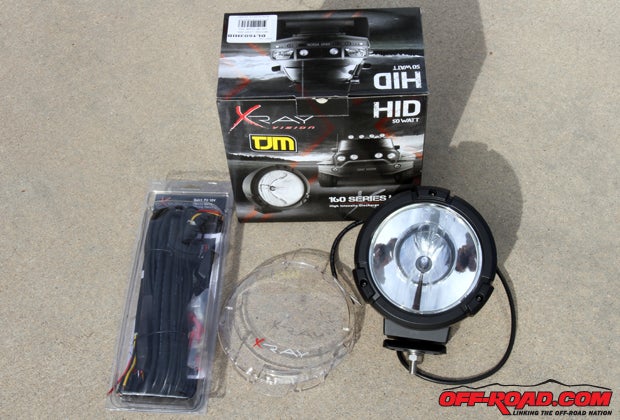
Stock headlights typically provide ample lighting for the roads, freeways and highways across the nation. Unless you’re driving in desolate country roads stock headlamps will provide enough lighting for safe driving, and in cases where it is a little too dark the high beams can aid in lighting up a little more of the road (provided there’s no oncoming traffic).
Driving off-road, however, has a variety of different hazards. Potholes, rocks, whoops and other hazards are littered across trails, and the stock lighting simply doesn’t provide the ideal visibility for these environments. This is where auxiliary off-road lighting comes in, as seeing clearly the hazards that lay ahead is crucial to keeping your off-road rig in one piece or avoiding a costly breakdown on the trail.
When we installed our Bestop Highrock Front Bumper on our Jeep Wrangler TJ, it featured two mounting locations for additional auxiliary lights. This provided us with the perfect mount for some additional off-road lights without having to worry about where to mount them. With its line of Xray Vision lights, we turned to TJM to address our lighting needs. TJM has been producing off-road parts since the 1970s out of its home country of Australia. That’s right, the ‘70s. Although its products have been offered in the U.S. market before, it was only recently the company has made a big push in North America with its wide line of off-road offerings that includes its XGS suspension line, Airtec Snorkels, TJM recovery equipment, trail protection (including bars, side steps and roof racks) and overland-style offerings in TJM roof top tents and awnings.
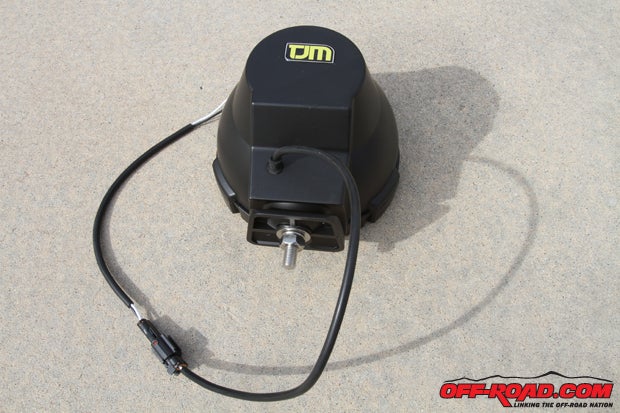
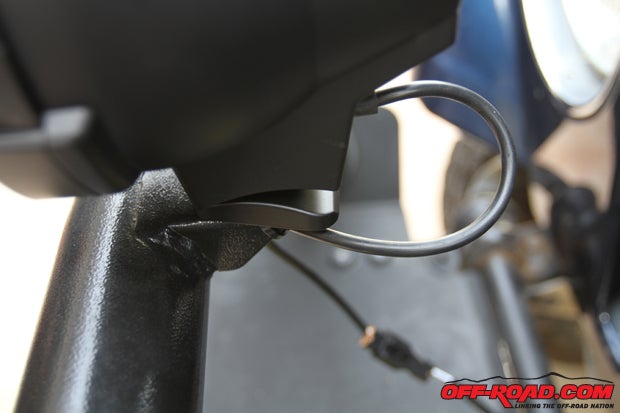
Helping TJM make an imprint in the U.S. is TJM USA President Chris Corbett, who’s been an off-road enthusiast practically all of his life and worked in the off-road industry for almost 20 years.
“TJM has been lucky to have growth in many export markets,” Corbett explains. “While TJM has grown exponentially in nearly all markets, with growth in China, Dubai. South Africa, etc., the one market that was not growing for the company was the U.S. TJM was here from about 1997 until 2006 in a capacity that wasn’t providing them the exposure it needed to succeed here.”
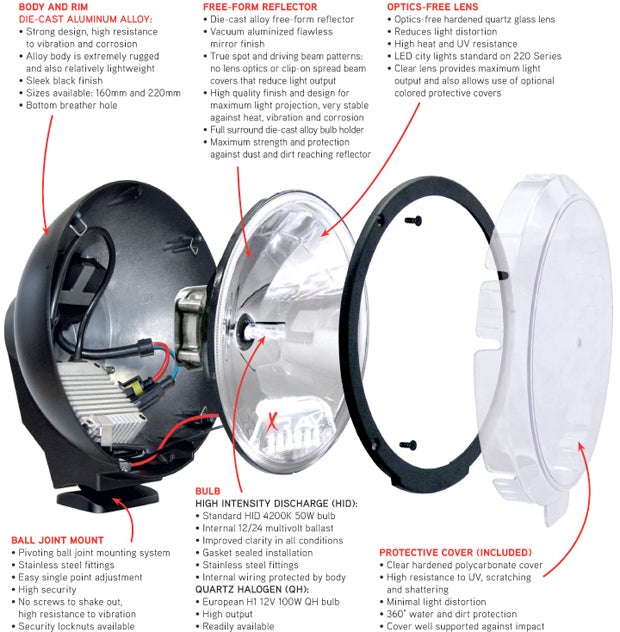
With a renewed focus, TJM has been more widely offered, and properly supported to address customer and distributor needs, in the North American market in the past few years.
“TJM didn’t create the market,” Corbett says in relation to its competitors. “As a business model, we’re happy to carve out a niche by educating and supporting the consumer. We do have overlapping products as other manufacturers, but we’re not trying to be just like anyone else. We try to offer products that our competitors don’t offer.”
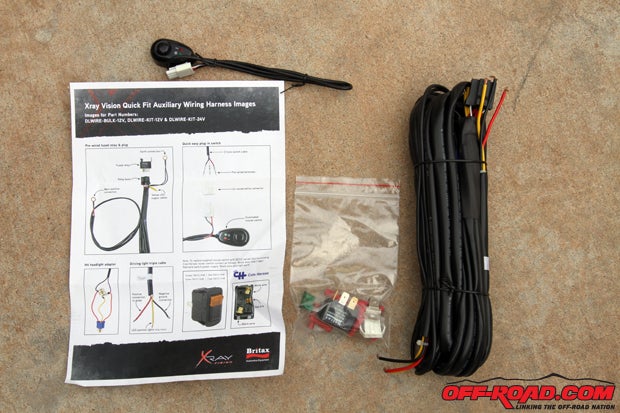
TJM’s Xray Vision line of lights gave us a great opportunity to check out the company’s offerings first hand. Before we got started, however, we did check in with local laws in California on auxiliary lighting, which is a good idea for all off-roaders as state lighting laws vary from state to state; for instance, depending upon the location, dark covers may be necessary to run when the vehicle is on the highway to make the lights legal, as they are only allowed for off-highway use.
There are two main styles of auxiliary lights in a “standard” light (TJM refers to this as a “driving beam”) that provides a wider beam of light to illuminate the trail as well as the objects around the trail, while a “pencil” light (TJM refers to this as a “spot” beam because they consider it to be slightly broader than a traditional “pencil”) will provide a more focused and narrow beam for maximum distance. In many instances, pencil beams will be used on off-road race vehicles since they travel at a high rate of speed and need to see as much of the course in front of them as possible. Slower off-road trail rigs may need a wider beam to see the trail around them.
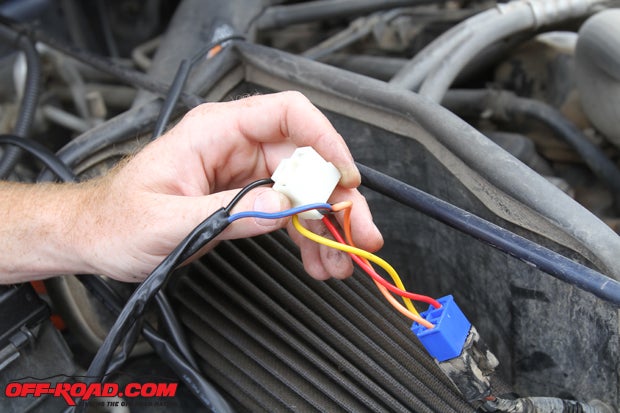
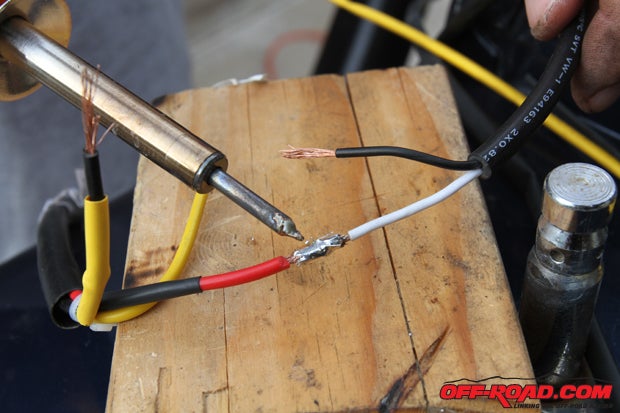
After speaking with Corbett about our needs, he suggested we run both a driving light and a spot beam on our setup. Since we are only adding two lights at this time, this setup as of late to provide a great all-around visibility on the trail. TJM’s Xray Vision line offers some different options (including a 50W HID, 100W quartz halogen, and a larger 220 Series line), but for our purposes the 160 Series would be best. TJM says its 160 HID features a 1 lux reading at 1530 yards. As Corbett explains to us, “In laymen’s terms, one lux is enough light to read newspaper from, so at 15 football fields distance you should be able to read a newspaper from our HID lights essentially.”
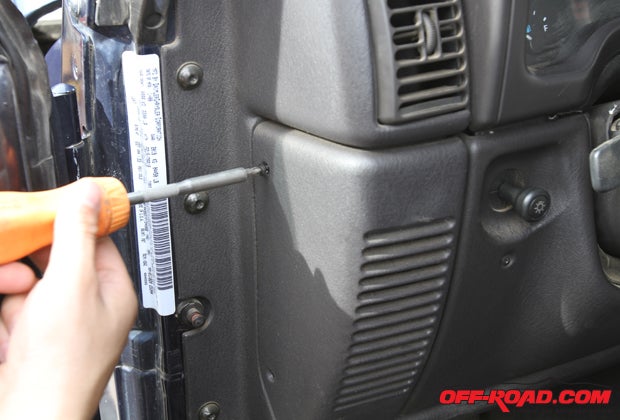
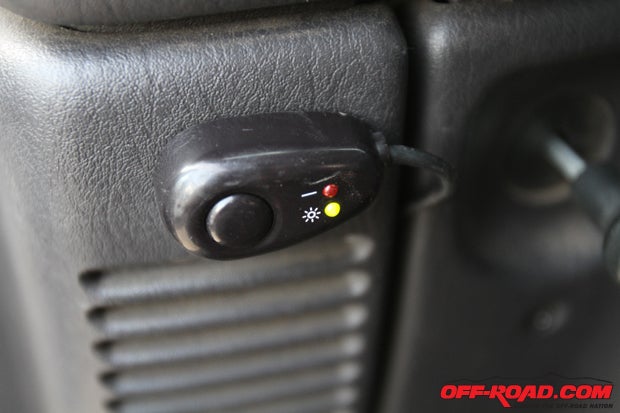
The Xray Vision 160 HID Series lights feature a die-cast aluminum alloy body and outside rim for durability and corrosion resistance. The HID (high-intensity discharge) is a 60-watt bulb that produces 4200K (or 4200 Kelvins). Kelvins refer to the color temperature of visible light, and essentially the more yellow its tint the clearer the lighting is to our eyes (most household light bulbs are within the yellow/white color spectrum). The HID lights feature gasket-sealed installation to prevent moisture and dirt from entering while stainless steel fittings help prevent corrosion. The die-cast alloy free-form reflector is designed to provide a mirror-like reflection. The optics-free hardened quartz-glass lens is designed to reduce light distortion, has high-heat and UV resistance and can be used with optional colored protective covers depending upon the application. The pivoting ball-joint mounting system is a nice feature as it allows for easy adjustment of the light angle once installed.
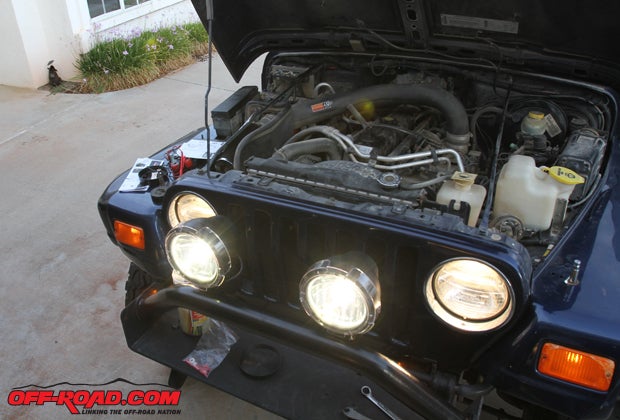
There are a few different options for installing the lighting. We initially installed the lights with a TJM wiring harness to make the process simple and seamless. The harness comes with a push-button switch that activates the lights when you need them on the trail. The only downside to the harness is that it has a relay that plugs into the stock lighting, which limits the functioning of the lights to when the vehicle’s high beams are activated.
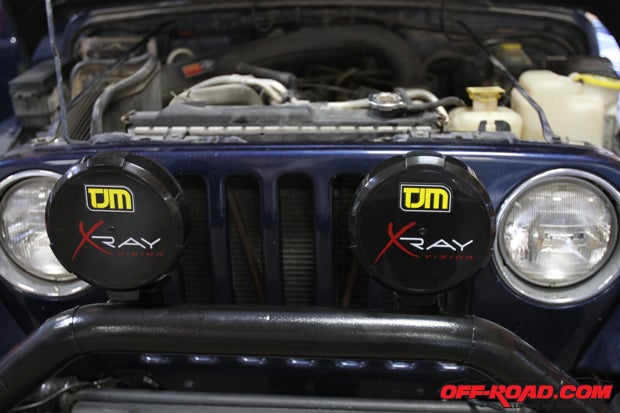
The system works great but we reassessed our situation and decided to instead wire the lighting through the stock fog lamp wiring that was still intact from when we removed the stock bumper. This would allow us to activate the lighting (with or without the high beams on) via the stock fog lamp toggle switch.
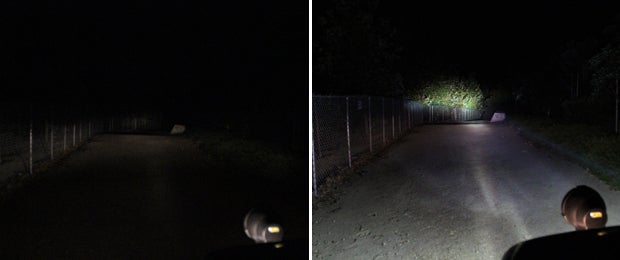
Once we finished with our installation, we put the lights to the test. Using a “spot” or “pencil” lamp on the right and a “driving” or “standard” light on the left (some choose to swap this setup, we’re going to test both for a time), we have a massive increase in visibility on the trail. The Xray Vision lights provide a huge increase in trail lighting, and the draw of the lights is not strong and therefor does not require us to install another battery. Once turned on, the lights take about 15 seconds to get to full power and they truly light up the path ahead. We have black covers for our lights for when driving on the highway, but we’ll use the clear covers when on the trail (though TJM does offer a number of color options).
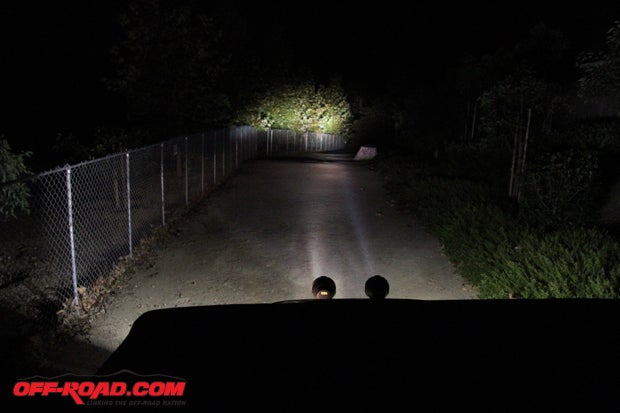
Sources
TJM
4115 Indus Way
Riverside, CA 92503
951/934-7150
http://www.tjmusa.com/


 Your Privacy Choices
Your Privacy Choices